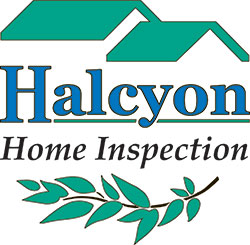Frequently Asked Questions (FAQs)
Browse through our Frequently Asked Questions about home inspections to learn more about them and what to expect.
A home inspection is a visual examination of a house’s structure and systems by a trained inspector. The inspector usually looks at the foundation, roof, attic, walls, ceilings, windows, doors, and any attached decks or porches. He will also inspect the electrical, heating, air conditioning, and plumbing systems.
Keep in mind that the inspector examines only what is visible and accessible. He’s not moving appliances or climbing onto a steeply pitched roof (but we do have a drone for that). He will report cracks in a wall but won’t be able to examine a slab foundation underneath wall-to-wall carpet or hardwood floors. Your inspector may find an issue that you would like inspected by a specialist, such as a structural engineer or plumber.
Building Codes are the minimum building practices allowed to make a structure safe, sound, and sanitary. A home inspection is considered a ‘visual performance inspection’, based on accepted building practices. A home inspection covering complete adherence to code is not possible due to the nature of the constraints of this inspection.
Much of the structure is covered disallowing visual inspection. The inspection is non-invasive because the property may not be owned by the inspector nor by the client. A true code inspection would encompass greater invasive procedures and would cost many times more than a typical home inspection.
A home inspection is an examination and objective assessment of the current condition of a house. A home inspector will not pass or fail a house, but rather describe its physical condition and indicate what components and systems may need major repair or replacement. A home inspection is not an appraisal and will not determine the home’s market value. It is also not a municipal inspection and does not verify local code compliance.
There is no set cost for a home inspection. The cost will vary based on the size and type of home, the scope of the inspection to be performed, and more. Please give us a call to determine the cost of the inspection based on what will be included for your particular inspection. These details will also be outlined in the inspection agreement that you will need to sign prior to the inspection.
Depending on the home’s age, size, and location, the home inspection may take up to three hours. Adding square footage, outbuildings, and/or ancillary services (such as a Home Energy Score) will increase that time. It is our opinion that if your home inspection takes significantly less than two to three hours, it may indicate that the inspector was not thorough enough, and we pride ourselves on being thorough.
That is purely your decision. But by attending the inspection, you may gain a better understanding of the home’s condition, which will give you insight into its potential sale points and defects. Additionally, you will likely learn information about the home’s maintenance, systems and components that may provide useful for the transaction.
Infrared (thermal imaging) is an advanced, non-invasive technology that allows the inspector to show clients things about their homes or buildings that can’t be revealed using conventional inspection methods. An infrared inspection can be used to identify moisture intrusion, energy loss, and even unexpected hot spots caused by electrical faults. The art of an IR inspection is to interpret the results as accurately and reasonably as possible such that the client is given actionable information in order to proceed with necessary repairs.
No, a pest inspection is not included as part of a home inspection. The inspector will point out any obvious signs of damage due to wood destroying organisms (WDOs) but a full pest inspection needs to be performed by a licensed pest inspector.
Not at this time. Mold testing involves two main methods: air sampling and surface sampling. Both types require analysis by a certified laboratory. In some cases, the local health department can test the mold samples. But it’s more common for a private lab to perform the analysis and generate the results in a report, and the cost is usually included in the price of the test kit.
Our Services
- Home Inspections
- Commercial Inspections
- Infrared Inspections
- Home Energy Scores (HES)
- Title-24 Compliance
- HERS Verifications
